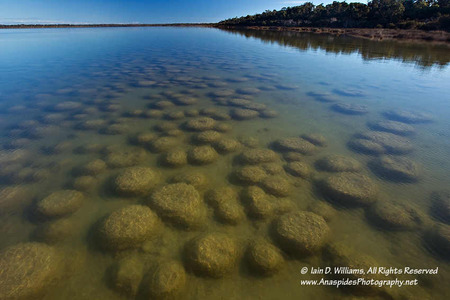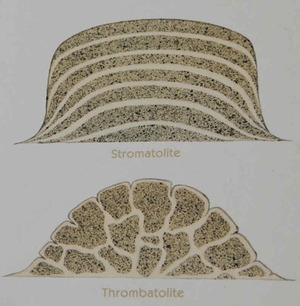Meet the Thrombolites - Ancient Life in Western Australia
 Thursday, October 10, 2013 at 4:51PM
Thursday, October 10, 2013 at 4:51PM  I’ve spent the last few weeks in Western Australia exploring some of the region south of Perth. My main aim was to find and photograph a number of orchid species found only in the south west of the state amongst the vast stands of Karri, Tingle, Tuart and Jarrah forests. I also was keen to photograph the ancient mound-like algal mats called thrombolites that are known to inhabit areas along the coastal zone.
I’ve spent the last few weeks in Western Australia exploring some of the region south of Perth. My main aim was to find and photograph a number of orchid species found only in the south west of the state amongst the vast stands of Karri, Tingle, Tuart and Jarrah forests. I also was keen to photograph the ancient mound-like algal mats called thrombolites that are known to inhabit areas along the coastal zone.
LEFT: Thrombolite community, Western Australia (click image to view larger)
Thrombolites and Stromatolites - Biology and Life History
Many individuals have heard of stromatolites. These ancient organisms (prokaryotes) are partly responsible for release to the atmosphere of increasing levels of oxygen. This oxygen slowly replaced the methane-dominated atmosphere prevalent during the Achaean Period. The microbes that form thrombolites and stromatolites produce oxygen as a byproduct of photosynthesis and precipitate calcium carbonate (biogenic limestone) which create the slow-forming dome-like structures. Thrombolite communities only occur in warm, shallow, hypersaline and well lit waters.
Thrombolites and stromatolites are a major constituent of the fossil record for about the first 3.5 billion years of life on earth, peaking in abundance approximately 1.25 billion years ago before declining in abundance and diversity by the start of the Cambrian Period. Declining diversity is thought to be primarily because of the increase in grazing-type animals, such as gastropods, that evolved from the beginning of the Cambrian Period.
Growth rates are slow and are around 10 cm per 100 years; but it must be remembered that only they outer layer of the mound is alive.
Modern thrombolites and stromatolites are uncommon. Specific environmental conditions are needed for their long-term development which includes a high temperature and hypersaline environment where the occurrence of grazing creatures is minimal.
 What are Thrombolites and how do they differ from Stromatolites
What are Thrombolites and how do they differ from Stromatolites
Thrombolites are clotted, accretionary structures, formed in shallow water by the trapping, binding, and cementation of sedimentary grains by biofilms of microorganisms, especially cyanobacteria. They exhibit a coarse, clotted fabric and laminae, if present, are indistinct.
The stromatolites are similar, but are well laminated with the outer surface displaying small, discrete knobs.
Both thrombolites and stromatolites precipitate calcium carbonate; however the former precipitates aragonite, a carbonate mineral which is a crystalline form of calcium carbonate.
LEFT: Cross section showing internal structure of thrombolite and stromatolite.
Rarity
Thrombolites and stromatolites are not common and are “Living Fossils”. They provide a key to the past as their form, structure and biology has not changed since their heyday in the Achaean Period.
Casuality of their own Success
Plate tectonics, and the competition for space, took their toll on the primitive thrombolites. They were eventually a casualty of their own success. Newly evolving organisms were thriving in the improved oxygenated conditions, and found the thrombolites to be a very tasty meal. They were slowly eaten off the face of the Earth.
Their legacy however, is the Banded Iron Formations (BIFS) that are backbone of the mining industry in Western Australia. BIFS form by the oxidation of iron locked in sediments and could not have occured without an oxygenated atmosphere for which the thrombolites and stromatolites were largely responsible.
The Toyota Landcruiser I drive would not be a possibility if these amazing organisms had not evolved…
Glossary
Hypersaline – A water body that has a very high concentration of sodium (salt)
BP – Before present
Plate Tectonics – The movement of the outer part of the earth’s crust due to eaerth’s interior heat
Lacustrine – Lake
Laminae – Layers added above each other similar to a layer cake
Gastropods - Phylum Mollusca comprising the snails and slugs
Achaean Period – Geologic Eon ~4000 – 2500 million years ago
Cambrian Period – Geologic Period ~550 – 490 million years ago
Quaternary Period – Geologic Period ~2.5 million years ago until present day


